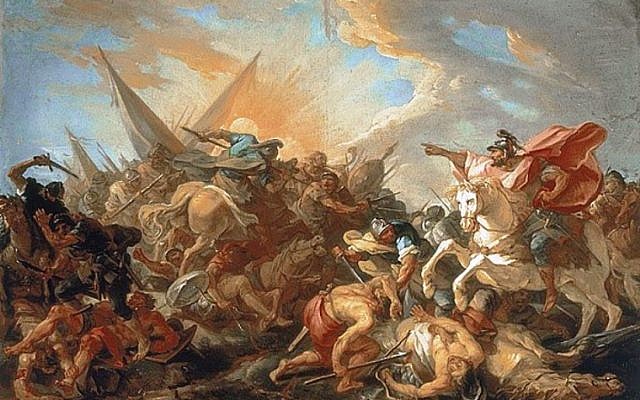2-5
ISAAC
The Sacrifice of Isaac
It just doesn’t make sense. After all Go
d had done for Abraha
m, after all God had
promised
Abraham, God tells him to take Isaac, this miracle child of promise, and sacrifice
him on a mountain designated by God
. How could this be? What’s going on?
Abraham had faith in God’s explicit promise that Isaac would be his heir. Faith in the
promise of God allowed him to go forward, ev
en when the command seemed to contradict
the promise. The book of Hebrews tells us that Abraham figured God could raise the dead
in order to fulfill his promise. So Abraham
took what he knew about God and His promises
and clung to that when God’s
command didn’t make sense.
“Now I
know
that you fear God, seeing you have not withheld your son, your only son,
from me,” Yahweh says to
Abraham. The Hebrew verb
yadah
, to know, here and elsewhere
carries the weight not only of head knowledge, but of experience. Now I have seen it in
action, I have the evidence, I have lived through the ordeal, now I
know
. Yahweh—and
Abraham—now have evidence of faith that trusts in God above all things. And God
provides the sacrifice, offers the way out,
substitutes a lamb for the life of a son.
* * *
A Wife for Isaac
When Sarah dies, Abraham purchases a tomb
—the only piece of the Promised Land he
will ever own in his lifetime
—and then he sets about getting
a wife for his son. He doesn’t
want Isaac to marry into the Canaanite cult
ure and be assimilated, so Abraham sends a
servant back to where his extended family is
living. Laban is the grandson of Abraham’s
brother, and Laban has a sister, Rebekah.
She agrees to go back
with Abraham’s servant to
become Isaac’s wife
, and the mother of Essau and Jacob.
Later, when her favorite son Jacob gets in trouble at home, Rebekah sends him back to
her family in NW Mesopotamia at Haran in Padan Arram (which is why Jacob can be called
a
wandering Aramean
), where he will end up marrying
two
daughters
of his Uncle Laban.
Type Alert
Typology
is an inner continuity of Scripture, where th
emes, events, and people are read in light of
each other. Like any good book or movie, the Bi
ble picks up on images and themes and intertwines
them, relating one set of events to another.
In Colossians 2, we read that
the Old Testament institutions are like a shadow, hinting at the real
body, Who is Christ. Jesus is
the fulfillment of the Scriptures, therefore we see Christ
in, with, and
under
Old Testament people and events.
The Sacrifice of Isaac is a good example. Here, a son of promise carries the wood of his sacrifice
on his back up the mountain of God and God Himself provides the offering. That mountain,
Moriah, is the place where the temple would later be built, in the shadow of which the Son of
Promise would carry a wooden cross on His back, and Himself be the Lamb provided for sacrifice.
Isaac is a
type
of Christ. The sacrifice of Isaac in Genesis 22
prefigures
the events of the cross.
It’s not that Isaac stands for Jesus, but th
at Jesus is like Isaac, only better. After a three-day
journey, Isaac is
figuratively
brought back from the dead. After three days, Jesus is
literally
raised to
life. The basic themes of God’s salvation are present throughout the history of His people. They are
brought to their
fulfillment
in the person of Jesus and
consummated
finally when He comes again.
***
Gen 22:1-19
Gen 24
